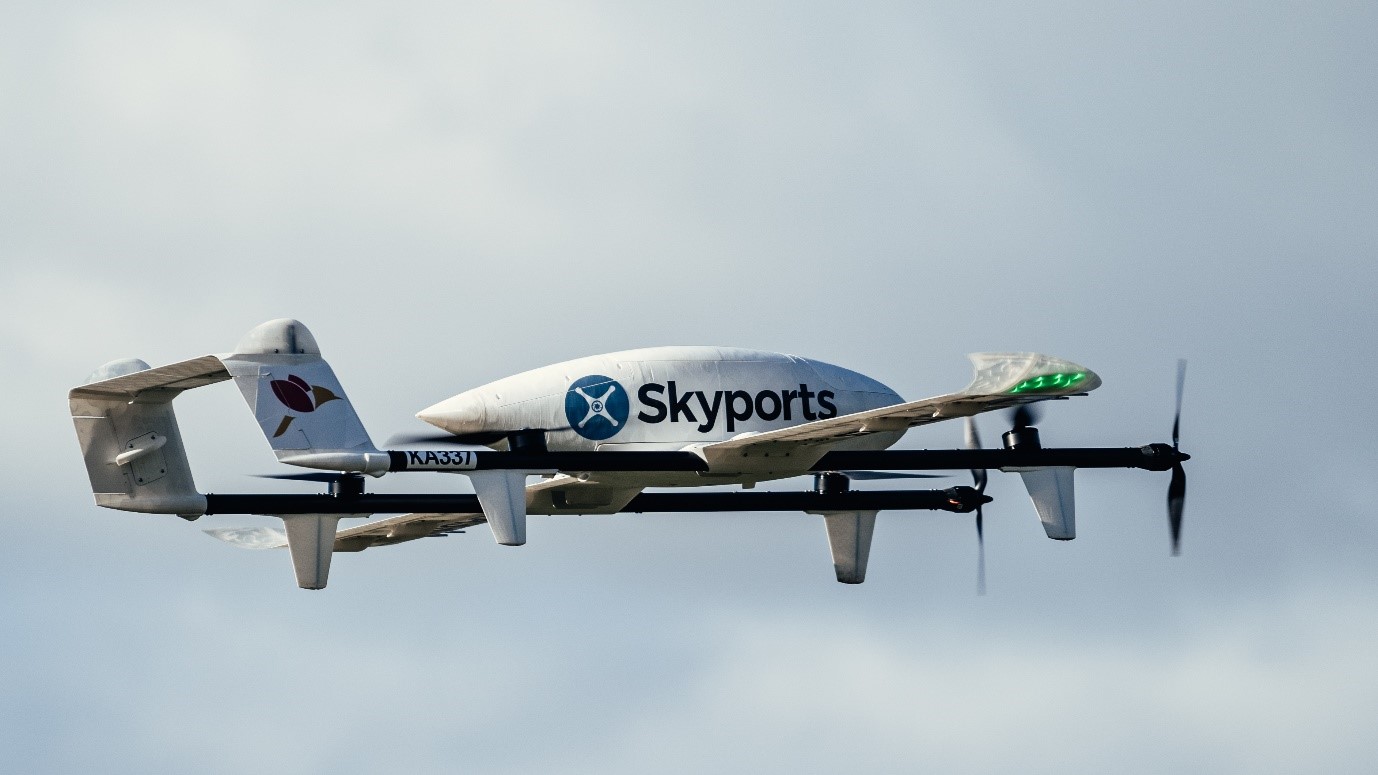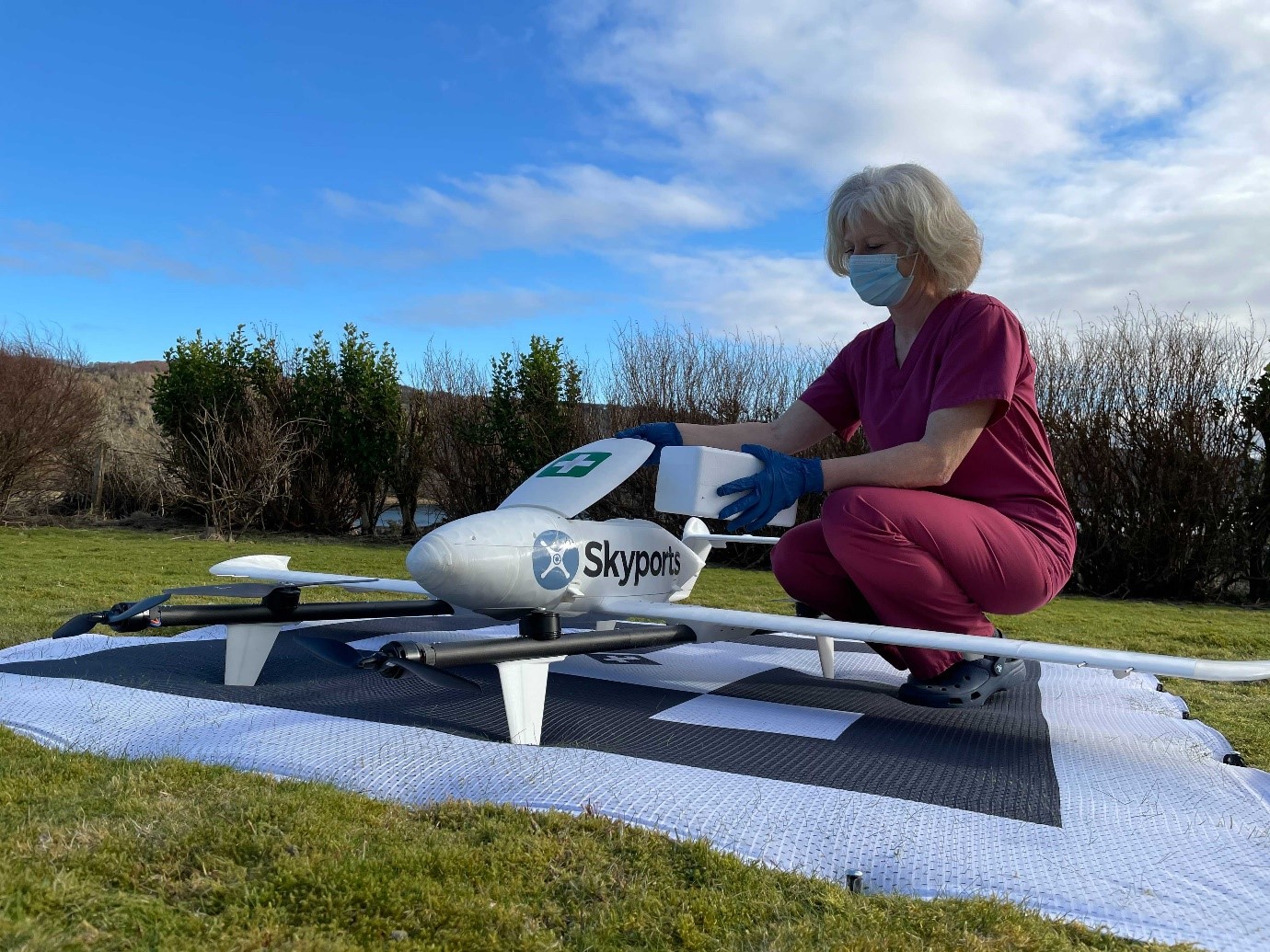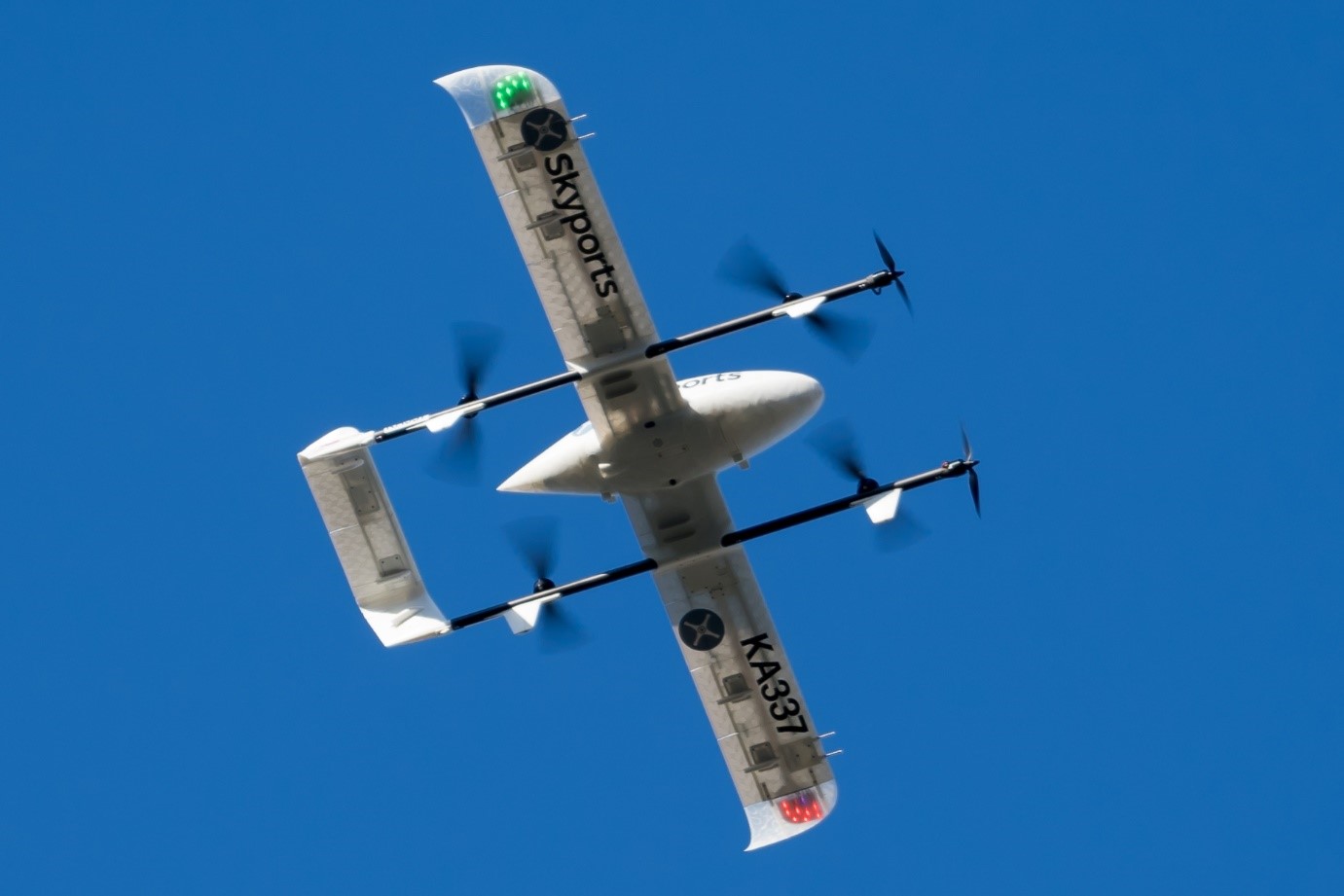Objectives of the service
In a non-COVID world, medical logistics is problematic enough within the Argyll and Bute region of Scotland. The undulating terrain and island geography can often result in slow and infrequent transport of medical products such as pathology samples. The effects of COVID-19 have worsened this, with a decrease in the number of transport modes such as ferries and a higher quantity of medical goods moving within the NHS supply chain.
A drone delivery system addresses these issues, significantly improving the speed and frequency with which medical products move between hospitals and medical practices, all whilst using an unmanned transport system which enables essential NHS staff to reduce their exposure to COVID-19 through improved social distancing.

The SEDDCR project implemented sophisticated delivery drones into the NHS supply chain in Argyll and Bute, able to carry payloads up to 3kg up to 100km. COVID-19 pathology tests, medicine, personal protective equipment (PPE) and other essential cargo were carried between the medical facilities. In addition, as “business as usual” pathology tests recommenced operations post the COVID-19 pause in routine testing, these were carried in the delivery drones, ensuring that patients received results as soon as possible and could commence potentially life-saving treatment quickly.
NHS staff orderd medical products / delivery through the specially-developed customer interface. This allowed staff to track the location of their delivery drone in flight, providing a never-before-seen level of transparency and tracking capability to the NHS supply chain.
Through the use of delivery drones, the project ensured all communities receive access to high quality healthcare, regardless of their geographical location.

Users and their needs
The user of the drone delivery solution is the NHS in Scotland. Specifically, it is the doctors, nurses and other medical professionals who need to rapidly move pathology samples, medicine and equipment between medical facilities. These users are looking for a medical logistics solution which meets the following requirements:
- Fast;
- Frequent;
- Secure;
- Reliable
- Cargo maintained within cold-chain environment (if relevant);
- Clear audit trail is kept of transports;
- Operationally effective for the NHS (e.g. unloading the drone, receiving packages, handoffs do not require excess resources to facilitate); and
- Cost effective.
The drone delivery solution meets these requirements.
The weather in Argyll and Bute is known for being poor in the winter months, with periods of high winds and strong rain. The drone delivery system is able to operate in levels of wind and rain; however, a key outcome of the project will be data which speaks to the real world drone delivery percentage uptime which can be maintained during periods of poor weather.
Service/ system concept
The drone delivery system provides a rapid, frequent, cost-effective and reliable medical logistics transport mode to the NHS. Users will be able to schedule/order drone deliveries through a specially-designed customer interface, with the ability to live-track the drone as it commences the delivery flight.
The overarching solution is comprised of:
- The drone: world-class drones able to carry up to 3kg of payload up to 100km, within a cold-chain environment.
- The control hardware and software: ground Control Stations through which Skyports pilots oversee the drone flights.
- The pilots: commercially qualified drone pilots, experienced in Beyond Visual Line of Sight (BVLOS) flights.
- Customer interface: a web portal through which NHS users can order and schedule products through the drone delivery service.
- Regulatory approval: UK Civil Aviation Authority (CAA) approved operations and airspace segregation.

Image Description: The Skyports delivery drone during live NHS operations in March 2021
Image credit: Skyports, Project :SEDDCR

Image Description: The Skyports drone operating during live NHS operations in March 2020
Image credit: Skyports, Project :SEDDCR
Space Added Value
The drone delivery system utilises space assets on three levels:
- Satellite Communication (SatCom): the drones fly automatically on pre-planned missions, but are overseen by a trained drone pilot monitoring the drones. The drones are connected to the pilot through a communications link, which is comprised of both LTE (i.e. mobile phone networks) and SatCom links. While the signal strength of LTE can differ based on the drone’s location and altitude, SatCom is always present and ensures that the drone pilots are always able to monitor the performance of the drone and take control if required. The SatCom link is therefore a critical safety redundancy component of the overarching drone delivery system.
- Satellite Navigation: the drones fly pre-programmed routes passing through waypoints which are defined by GNSS co-ordinates and altitude levels. The drones have a Global Navigation Satellite System (GNSS) receiver, which utilises the GNSS constellations to determine its position.
- Satellite-enabled Mission Planning: mission planning is a critical task which involves studying the geography and terrain of the area being overflown to ensure that the operation is conducted safely and in compliance with UK aviation regulations. Up-to-date and accurate satellite imagery greatly enhances the mission planning process through understanding elevation levels, potential obstructions, ground risk profile and other important elements.
Current Status
The three-month project finished in May 2021, having successfully delivered critical medical cargo for the National Health Service (NHS) in the Argyll & Bute region of Scotland.
During the trial the following results were achieved:
- Over 11,000 hours of pathology sample transport time saved, compared to the normal transport method of van porters.
- Over 14,000km Beyond Visual Line of Sight (BVLOS) travelled
- Over 1,6000 diagnostic samples carried, from 884 patients
Front-line NHS staff feedback was very positive with staff quickly adapting to the drone delivery solution and appreciating the benefits coming from a fast and frequent transport modality.
Skyports is currently working with the Civil Aviation Authority (CAA) and NHS end-user to take this project forward into permanent commercial operations.
Please see the following link to a project overview video: https://vimeo.com/564086649
Prime Contractor(s)
Subcontractor(s)





